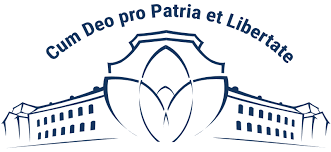SUSTAINABLE DEVELOPMENT OF ACTIVE TOURISM IN THE SVYDOVETSKYI MASSIF OF THE UKRAINIAN CARPATHIANS
DOI:
https://doi.org/10.32782/2786-5843/2025-3-15Keywords:
active tourism, mountain areas, Svydovets massif, sustainable development, tourist and recreational potentialAbstract
Relevance of the study. In the current conditions of global changes in the field of recreation and tourism, caused by the pandemic, ecological and social demands and the reorientation of tourist flows towards nature, active tourism is taking an increasingly important place in the tourism industry. The rejection of mass organized tourism in favor of individual, small-group and amateur forms of leisure requires a rethinking of approaches to the use of the natural potential of mountain areas in the context of sustainable development, in particular in the Ukrainian Carpathians. The Svydovetsky massif is one of the unique natural regions (massifs) of the Carpathians, which combines high- mountain landscapes, preserved ecosystems, ethnocultural environment and numerous opportunities for organizing various types of active tourism. At the same time, a significant part of its potential remains unused or is used chaotically, without proper infrastructure, spatial planning and consideration of environmental load.The subject of the study: processes, forms, conditions and factors of organizing active tourism within the Svydovetsky massif, as well as related infrastructural, socio-economic and environmental aspects.The purpose of the study: comprehensive analysis of the state, problems and prospects for the development of types of active tourism within the Svydovetsky massif in order to form practical recommendations for their optimal organization and infrastructure support. The research methods. In the process of the study, a set of complementary methods was used: analysis of scientific literature and regulatory sources – for theoretical substantiation of the concepts of active tourism; geographical descriptive method – for identifying natural and recreational resources of the territory; comparative analysis and systematization – when developing proposals and classifications.Results and practical significance of the study: a study of the problems of organizing types of active tourism within the Svydovetsky massif of the Ukrainian Carpathians was conducted, which will contribute to the development of regional tourism strategies, environmental conservation and the formation of a competitive tourism product.Conclusions: the current state, features and problems of existing forms of active tourism within the massif were analyzed, risks, barriers and threats to the sustainable development of active tourism in the studied area were identified, new promising areas of active tourism were proposed in accordance with the resource potential of the region, recommendations were developed for the development of tourist infrastructure and ensuring the safety of tourists in the Svydovets massif of the Ukrainian Carpathians.
References
Колотуха О.В. Спортивний туризм: співвідношення понять. Географія та туризм. 2013. Вип. 26. С. 3–13. URL: http://nbuv.gov.ua/UJRN/gt_2013_26_3
Масляк П.О. Рекреаційна географія. Київ : Знання. 2008. 343 с.
Щур Ю.В., Дмитрук О.Ю. Спортивно-оздоровчий туризм. Київ : Альтерпрес, 2003. 232 с.
Федорченко В.К., Дьорова Т.А. Історія туризму в Україні. Київ : Вища школа, 2002. 195 с.
Фокін С.П. Спортивний туризм : Конспект лекцій. Київ : КУТЕП, 2005. 141 с.
Мальська М.П., Гамкало М.З., Романів П.В. Активний туризм: теорія та практика : підручник. Київ : Видавець ФОП Піча Ю.В., 2022. 252 с.
Mazurski K. R. Geneza i przemiany turystyki. Wroclaw: WCZ. 2006. 249 s.
Merski J., Warecka J. Turystyka kwalifikowana. Turysryka aktywna. Warszawa: Almamer. 2009. 275s.
Mokras-Grabowska Justyna. Różnorodność metod teoretycznych i form podejść w turystyce aktywne. Warsztaty z Geografii Turyzmu, T. 6. 2015. S. 117–129.
Rajmund Tomik. Turystyka aktywna – pojęcie, rodzaje i formy. Studia Periegetica № 2 (14) в. 2015. S. 13–24.
Adamczyk J. Od turystyki aktywnej do ekstremalnej – miejsce turystyki kwalifikowanej na współczesnym rynku, w: I. Ozimek (red.), Funkcjonowanie i rozwój współczesnej turystyki – wybrane zagadnienia, Warszawa: SGGW. 2011, S. 63–88.
Bończak B. Aktywne formy turystyki – problemy terminologiczne, w: R. Wiluś, J. Wojciechowska (red.), Nowe-stare formy turystyki w przestrzeni, Łódź: Wyd. Uniwersytetu Łódzkiego. 2013, S. 49–62.
Aleksandra Vierek, Rajmund Tomik, Gerard Kosmala. (2019), Turystyka aktywna w teorii i prak-tyce. Wybrane zagadnienia. Podręcznik dla studentów Wydawca: AWF Katowice. 197 s.
Indicators of Sustainable Development for Tourism Destinations: a guidebook. Madrid: World Tourism Organization, 2004. 516 p.
Mountain tourism – Towards a more sustainable path. 2021. URL: https://www.e-unwto.org/doi/10.18111/9789284423163
Understanding and Quantifying Mountain Tourism. 2023. URL: https://openknowledge.fao.org/server/api/core/bitstreams/61b2d458-76be-404e-a47d-aee5a5372b96/content
Гірські масиви та «райони» Карпат, їх розташування. URL: https://vpohid.com.ua/blog/2019/08/19/hirski-masyvy-ta-rajony-karpat-ikhnie-roztashuvannia/
Кравчук Я.С. Альпійський рельєф Українських Карпат. Проблеми геоморфології і палеогеографії Українських Карпат і прилеглих територій : збірник наукових праць. Львів : Видавничий центр ЛНУ імені Івана Франка, 2006. С. 2–17.







